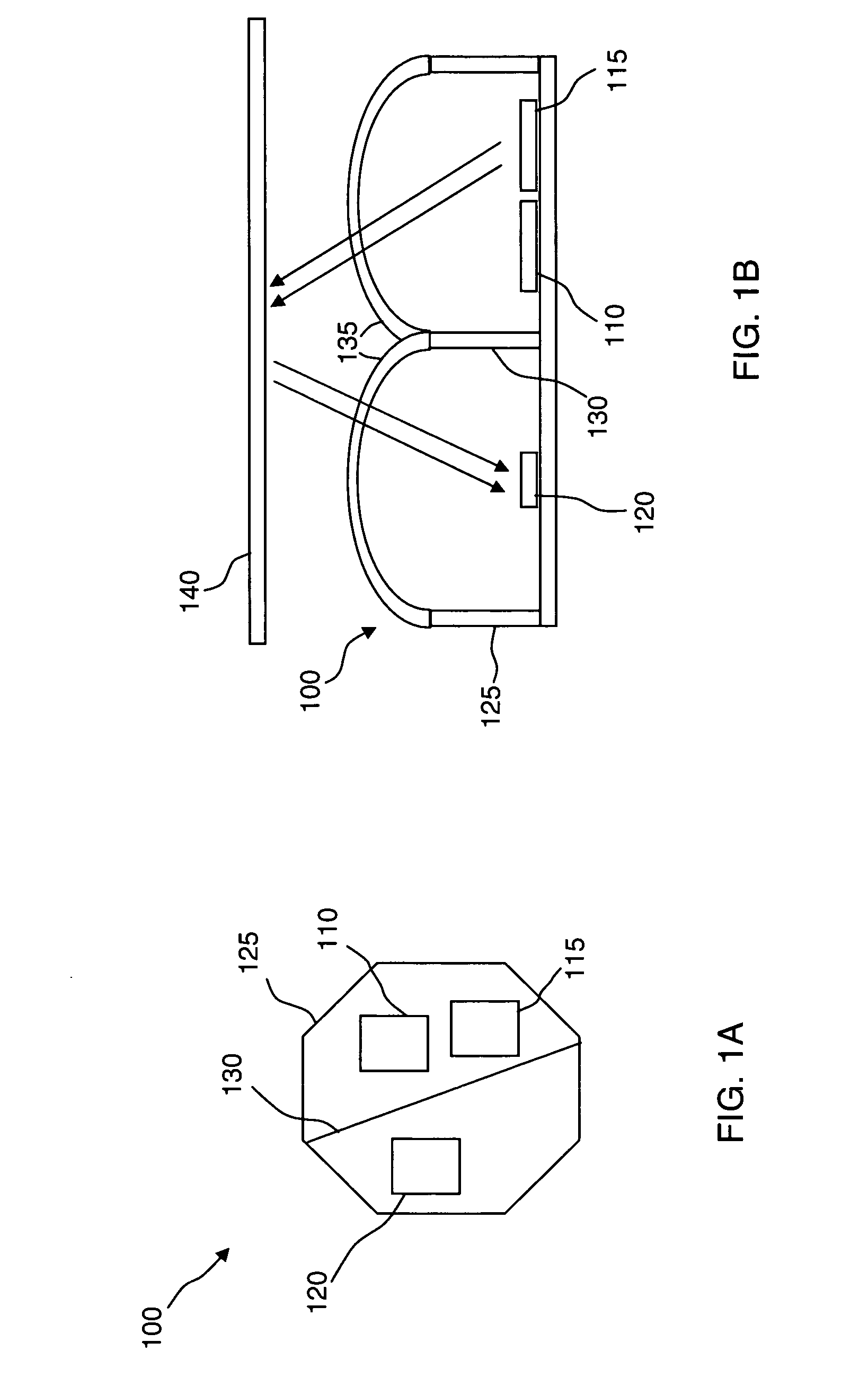Integrated ambient light sensor and distance sensor
a technology of ambient light sensor and distance sensor, which is applied in the direction of optical radiation measurement, distance measurement, pulse technique, etc., can solve the problems of increased manufacturing cost and energy saving in order to prolong battery li
- Summary
- Abstract
- Description
- Claims
- Application Information
AI Technical Summary
Benefits of technology
Problems solved by technology
Method used
Image
Examples
Embodiment Construction
[0024]FIGS. 1A and 1B illustrate an integrated proximity and light sensor 100 that integrates one or more indicating light-emitting devices (“ILD's”) 110, a projecting light emitting device (“PLD”) 115, and a light sensing integrated circuit (“LSIC”) 120. In the present embodiment, the ILD 110, PLD 115, and LSIC 120 are enclosed in a protective light-isolation housing 125. The protective light-isolation housing 125 includes a light isolation partition 130 that separates the LSIC 120 from the PLD 115. In other embodiments, the ILD 110 and PLD 115 are also optically isolated from each other by a light isolation partition (not shown). The protective light-isolation housing 125 further includes one or more optics ports 135 disposed above a top surface thereof. The optics ports 135 may include lenses, optical flats, or other designs apparent to a person of skill in the art, and may be made from any material, such as glass or plastic, which is transparent or semitransparent to light in so...
PUM
| Property | Measurement | Unit |
|---|---|---|
| time period | aaaaa | aaaaa |
| time period | aaaaa | aaaaa |
| integration time | aaaaa | aaaaa |
Abstract
Description
Claims
Application Information
 Login to View More
Login to View More - R&D
- Intellectual Property
- Life Sciences
- Materials
- Tech Scout
- Unparalleled Data Quality
- Higher Quality Content
- 60% Fewer Hallucinations
Browse by: Latest US Patents, China's latest patents, Technical Efficacy Thesaurus, Application Domain, Technology Topic, Popular Technical Reports.
© 2025 PatSnap. All rights reserved.Legal|Privacy policy|Modern Slavery Act Transparency Statement|Sitemap|About US| Contact US: help@patsnap.com



